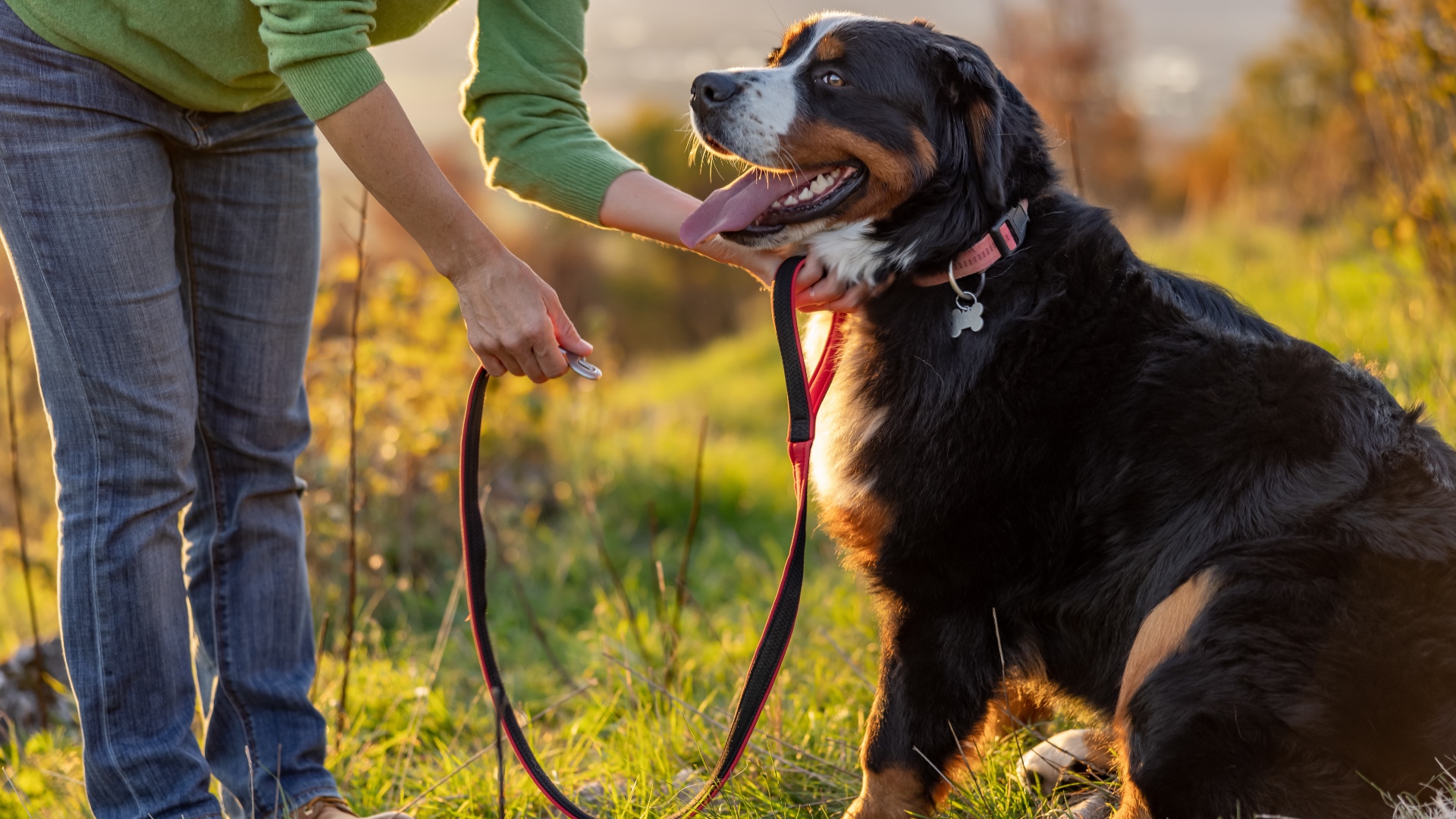
If you're an active, outdoor-loving person, then no doubt one of the best parts of having a dog is being able to get out and about in nature together. But what if you have a new pup that freezes when you go for a walk or a long-time canine companion who suddenly decides they'd rather sit still?
While it can be tempting to label your fur friend as stubborn, expert trainer Julianna DeWillems says getting frustrated with your dog won't serve you when it comes to changing their behavior. Instead, just like when it comes to learning how to calm a reactive dog, understanding the reason for your dog's pause and using thoughtful training techniques is the key to success.
If you're currently struggling with this issue with your own pup, you'll find DeWillems tips below helpful when it comes to understanding what's going on for your dog, strengthening your relationship with them, and getting them moving again.
"Dogs can pause on walks for so many different reasons," DeWillems explains. "Sometimes you can make a pretty good guess about why they've stopped moving, but sometimes it's hard to tell the reason why your dog is pausing on walks. Either way, we aim to approach stopping on walks with patience, kindness and smart training."
DeWillems says that if your dog pauses, it's important not to try to force them to start walking again. "Instead, wait next to the dog and then once they resume walking, reward their movement. By intentionally rewarding when they're moving, we are reinforcing the behavior of taking steps."
It's also worth noting that DeWillems recommends steering clear of one of the most common loose leash walking mistakes, which is using treats to try to entice your dog to move. "This can create a behavior chain of starting and stopping, because that's what the dog thinks is leading to the treat.
Part of being a good positive reinforcement trainer is understanding how reinforcement works, including how it can work against us (dogs are always learning!) and how to use it to our advantage," explains DeWillems.
If you find you're not seeing any improvements in your dog's walking behavior after a few months of using this technique, we recommend reaching out to a professional trainer for advice and guidance.







